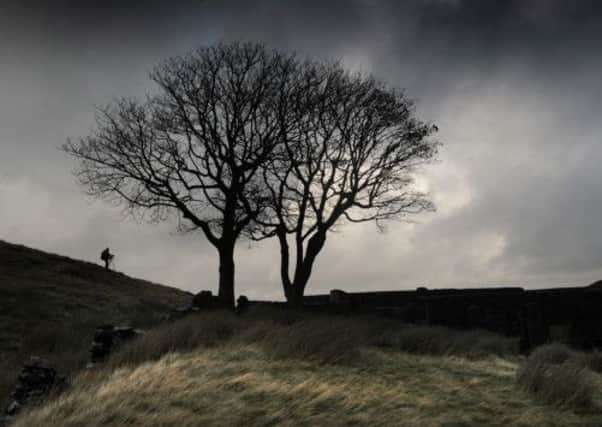How sorrow threatens beloved Bronte moors


But now the glorious carpet of heather is in danger of being usurped by invading flora planted by mourners who have scattered the ashes of loved ones on the moors.
Penistone Hill, which features in Wuthering Heights as Penistone Crag, has become a focal point for those brooding on the loss of family and friends.
Advertisement
Hide AdAdvertisement
Hide AdAs a high point above the former Brontë Parsonage at Haworth, it has long been a favourite spot for memorial benches.
But it seems many are no longer content just to sit and reflect, or lay the odd wreath. They now turn up with trees, shrubs and flowers to plant on the moors.
Problems have emerged as few are indigenous to Howarth - or moorland in general – and have been spreading through the landscape like wildfire.
The Brontë Society is concerned that - if left unchecked - the traditional flora such as heather and harebells so beloved by the sisters will be lost forever. The spread of foreign plants is also endangering the fragile habitats of moorland birds that the Brontës wrote about, such as lapwings, curlews, and skylarks.
Advertisement
Hide AdAdvertisement
Hide AdPenistone Hill has a special place in the hearts of Brontë fans since it inspired the great romantic scene between Laurence Olivier and Merle Oberon in the 1939 film.
Members of the Brontë Society are so concerned for its future that they have teamed up with Bradford Council to create a memorial garden.
The aim is to draw the problem away from the moorland wilderness to the tidiness of Haworth Park - where council gardeners can contain the threat of alien spores.
The heritage and conservation officer for the society, Christine Went, insisted the threat to the literary landscape and its sites of special scientific interest was very real.
Advertisement
Hide AdAdvertisement
Hide AdShe said: “As far as we can tell from the Brontës correspondence the moors have changed very little since they walked upon them.
“Much of the poems and writing on moorland themes and mentions include heather, harebells, lapwings, curlews and skylarks.
“They are all still there - along with a lot of other species. So the last thing we want is non-indigenous species coming in and putting pressure on natural habitats.
“These include a great variety of mosses which are very delicate habitats. It would be so easy to upset the balance and wipe out whole species.”
Advertisement
Hide AdAdvertisement
Hide AdA major issue has been the planting modern roses, which are largely grafted onto wild stock rather than the less sturdy stock they are cultivated from.
Local Tory Councillor Glen Miller said: “The wreaths are no problem because the flowers just die. But there are lots of invasive plants growing a lot bigger than the heather. In time, they will take over. Roses are not a natural moorland plant and they are growing like brambles. So something needs to be done to protect the natural heather.”
A council car park which has been created at Penistone means visitors can now easily drive there rather than have to walk over the untamed moorland.
Council bosses had been bemused what to do about all the plants because simply ripping them up risked upsetting those who were still grieving.
Advertisement
Hide AdAdvertisement
Hide AdBradford Council’s assistant director of leisure services, Phil Barker, admitted staff had been faced with the dilemma after they were having to deal with an ever-growing number of memorials.
He added: “Whilst we acknowledge that some people do like to mark their loved ones favourite places in this way we want to make sure that we preserve the natural beauty of the country park for future generations to continue to enjoy.
“Worth Valley councillors have allocated some funding and we are working with the Friends of Haworth Park to create a memorial garden in Haworth Park where people can plant memorials.”